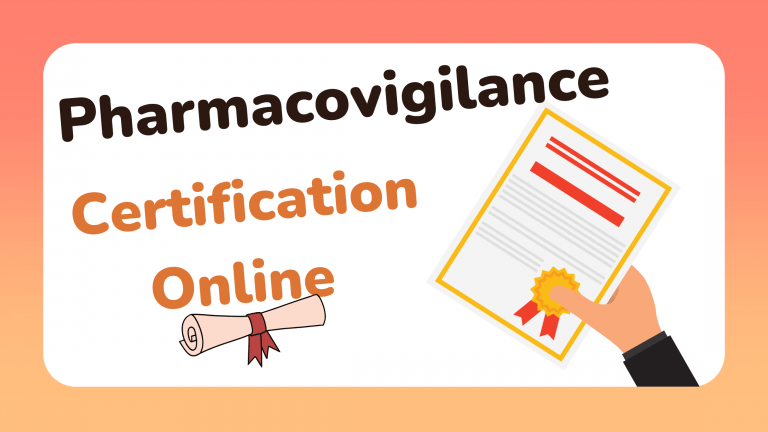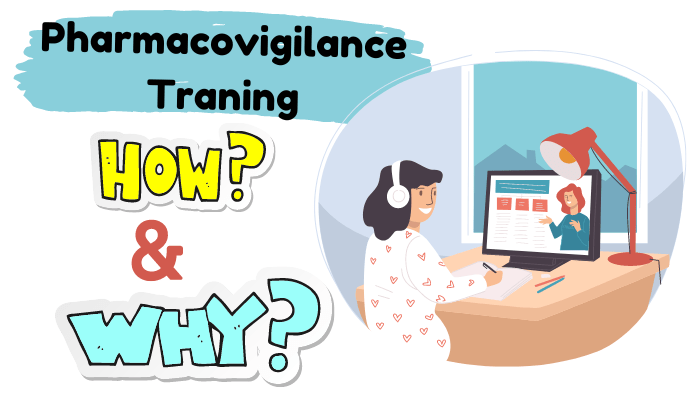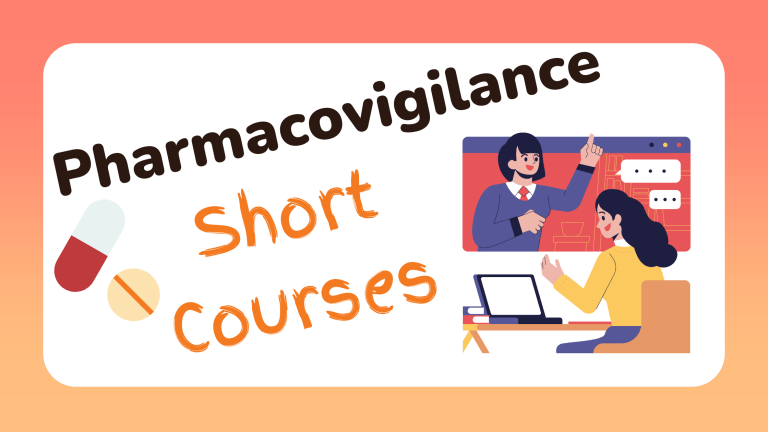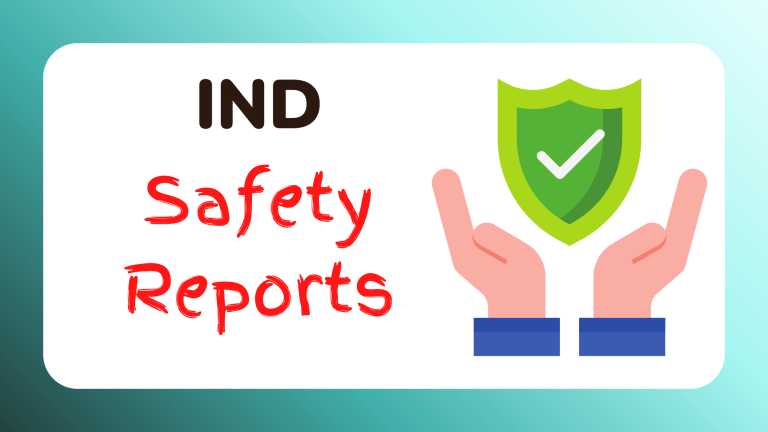Pharmacovigilance Signal Detection:10 New Facts You Need to Know
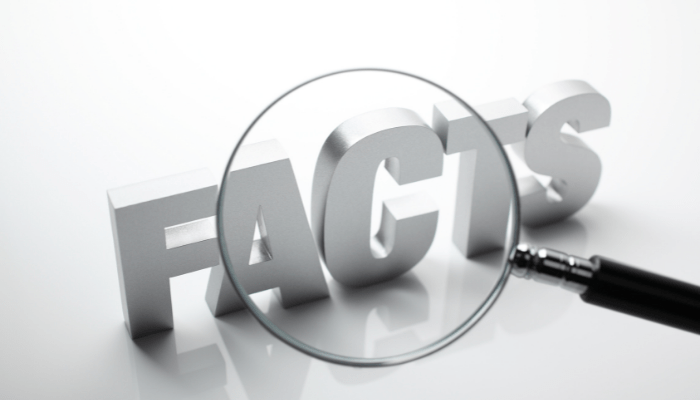
One of my HCPs who enrolled in my Pharmacovigilance online course had been working at the community pharmacy for years and had never had to report an adverse event.
He knew that it was something important that he was supposed to do, but he was not sure how to go about it.
One day, he attended a pharmacovigilance training seminar and learned about signal detection.
He understood the importance of reporting adverse events and how to do it properly. He was now able to ensure the safety of his patients by reporting any adverse events that occurred.
A safety signal is a critical part of ensuring the safety and efficacy of medications.
In this blog post, we will discuss 10 facts that you need to know about pharmacovigilance signal detection.
We will cover topics such as why signal detection is important, how signals are detected, and the steps involved in the pharmacovigilance process.
Stay tuned for more information on this important topic!
What is Signal Detection?
Why does Signal Detection Matter?
How Signals are Detected?
But before we start, Check out our cheap online Pharmacovigilacne online courses
-
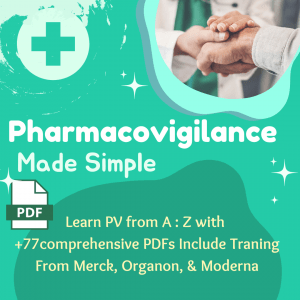 Product on salePharmacovigilance PDF MaterialsOriginal price was: 299 $.49 $Current price is: 49 $.
Product on salePharmacovigilance PDF MaterialsOriginal price was: 299 $.49 $Current price is: 49 $. -
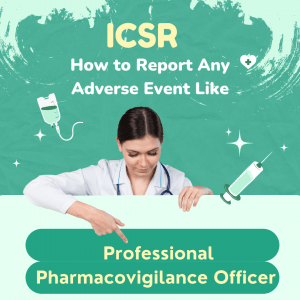 Product on saleICSR Pharmacovigilance | Individual Case Safety Report Online TrainingOriginal price was: 59 $.19 $Current price is: 19 $.
Product on saleICSR Pharmacovigilance | Individual Case Safety Report Online TrainingOriginal price was: 59 $.19 $Current price is: 19 $.
What Is Relationship Between Pharmacovigilance And Signal Detection?
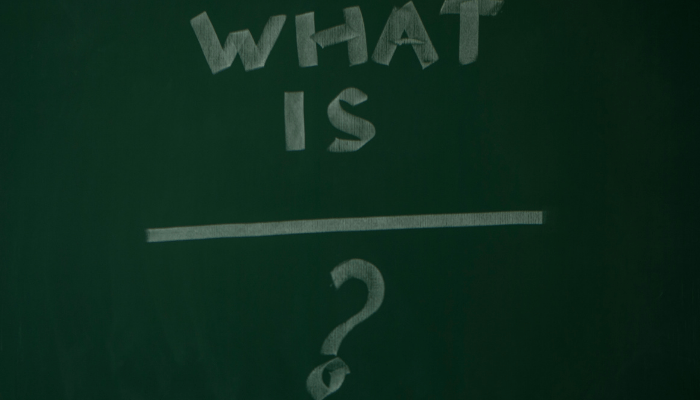
Before you start learning all about Pharmacovigilance, you must know Introduction to Pharmacovigilance as it is the science and activity of monitoring the safety of drugs, including the detection and assessment of drug-related adverse events.
Signal detection is a process by which signals (potential adverse drug events) are identified from among all reports received.
Pharmacists play an important role in pharmacovigilance signal detection.
As front-line healthcare professionals who have regular contact with patients, pharmacists are in a unique position to identify potential adverse drug events.
In addition, pharmacists are well-trained in the identification and assessment of adverse events, and they can provide valuable input into the determination of whether a potential event represents a true signal. Also, keep updating their SOPs according to Pharmacovigilance Audit Checklist to not get any strict by FDA inspectors.
If you want to
In this article, we will discover facts about the importance of signal detection for drug safety.
First, let’s find out a few terminologies commonly used when talking about pharmacovigilance signal detection:
Pharmacovigilance signal management process
The signal management process is the system by which safety signals are identified, evaluated, and monitored.
Signal detection
Signal detection is the identification of a potential safety issue with a drug.
Signal validation
The process of verifying that a pharmacovigilance signal detection is real and not the result of random chance is called signal validation.
Validated signal
A validated signal is a signal that has been determined to be associated with a particular adverse drug reaction.
Non-validated signal
A pharmacovigilance signal is a potential adverse event that is not yet confirmed to be associated with a particular medication.
A safety signal is a process of identifying and investigating potential signals in order to determine whether they are associated with a particular medication.
Pharmacovigilance signal detection assessment
The process of further evaluating a validated signal takes into account all available evidence, to determine whether there are new risks causally associated with the active substance or medicinal product.
This review may include nonclinical and clinical data but should be as comprehensive as possible regarding where you get your information from – for example, personal experiences vs published studies.
Refuted signal
When an association between two variables is deemed “false” i.e., there’s no causal relationship present, it can be difficult to know how best to utilize the information for future research purposes without being misled by these premature conclusions
In some cases, validation may proceed as planned even when a false positive result has been reached which means avoiding wasted time and resources with unproductive efforts
It can be difficult to know how best to utilize the information for future research purposes without being misled by these premature conclusions.
In some cases, though, validation may proceed as planned even when a false positive result has been reached, which means avoiding wasted time and resources with unproductive efforts.
Emerging safety issue
The safety of our patients is always a top priority.
When we receive an urgent alert from the competent authority about a potentially major impact on risk-benefit balance or the need for prompt regulatory action and communication to healthcare professionals.
Then you can be sure that something’s gone wrong!
Confirmed signal
The PRAC has prioritized this validated signal according to the lead Member State.
What is Pharmacovigilance Signal Detection?
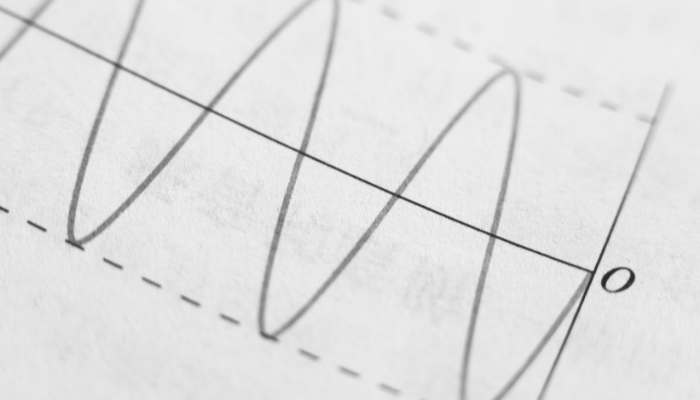
Signal detection is the process of identifying and investigating potential signals of adverse drug reactions.
Signals can be identified through a variety of methods, including pharmacovigilance databases, medical literature, and spontaneous reports from healthcare professionals and patients.
It is important to detect potential signals as early as possible in order to prevent further harm to patients.
Why does Pharmacovigilance Signal Detection Matter?

A safety signal is critical for ensuring the safety and efficacy of medications. By detecting potential signals early on, we can prevent further harm to patients.
Additionally, detecting signals can help us learn more about the safety profile of medication and improve patient care which can be added to the Pharmacovigilance Master File.
How pharmacovigilance signals are Detected?
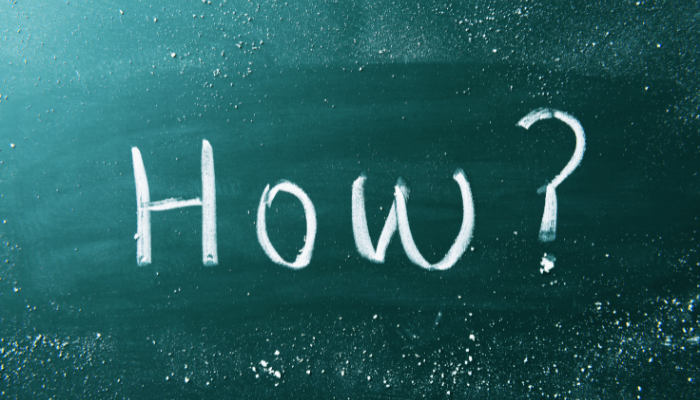
There are a number of ways that potential When signal detection is applied to data, it’s important that the methodology takes into account various factors.
For example nature of information and characteristics/characteristics (e.g., time on market) as well as the type of medicinal product involved – some types require specific strategies such as vaccines or biological meds.
Clinical judgment should always be used when making decisions about what method would work best in this situation
The evaluation of a signal during signal validation and further assessment is critical.
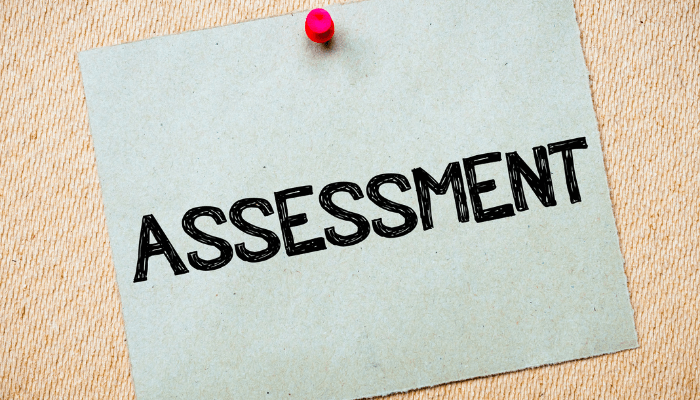
1. Signal validation is a process that is used to determine the validity of a signal
2. There are a number of factors that need to be considered when validating a signal
3. The further assessment of a signal can provide more information about its characteristics
4. The assessment of a signal can help with the determination of its uses
5. The assessment of a signal can also help with the development of detection algorithms
When reviewing ICSR data, the following elements should be considered:

- The more information about adverse reactions included in your product’s SmPC and package leaflet, the better!
- If you’re certain that this will help people who are allergic or sensitive to its ingredients understand what they could experience from taking it as well:
- Even if there isn’t an issue with other medications containing similar substances
- Then include all relevant signals.
2. We assess the strength of evidence based on a number of criteria, including:
-the total number of cases (after exclusion duplicates), and amongst those we look at supportive ones such as cases showing a compatible temporal association or positive de-challenge for this particular medical condition.
Lack of potentially alternative causes — judged possible relations between patient exposure & illness reported by reporting healthcare professionals with the result.
3. Safety signals are important in order to protect patients from potential harm.
Healthcare professionals play a key role in pharmacovigilance, and by reporting any potential signals, they can help ensure the safety of medications.
4. When healthcare professionals report potential signals, they are helping to build a stronger pharmacovigilance system.
This system is essential for identifying and mitigating potential risks associated with medications.
5. The pharmacovigilance process is complex, and it involves a number of steps and stakeholders.
By reporting potential signals, healthcare professionals are helping to streamline this process and ensure that potential risks are identified and addressed quickly.
6. The clinical relevance and context of a reaction are something that should be taken into account when assessing its seriousness or reversibility.
For example, reactions occurring in the context of drug-drug interactions might provide additional insight into an adverse event.
As well as give us more information about how it may have occurred due to certain combinations being used at once rather than just one alone Clinical Relevance
Signal Prioritization
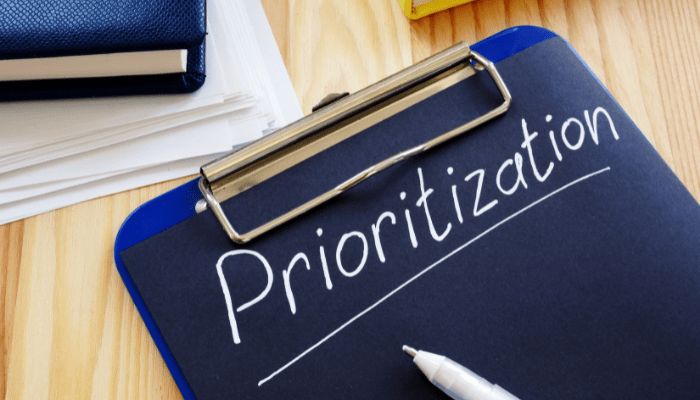
When considering the risks of a signal management process, it is important to look at how they impact patients and public health.
There are many factors that should be considered including:
– The severity or seriousness of this risk to both individuals as well as society in general; whether there’s a chance for prevention through modification of existing medications/therapies etc.
What kind of offender would want these medicines if available without restrictions? How much do you think people would sell their own bodies?
Pharmacovigilance Signal Detection: 10 Facts You Need to Know

1. Pharmacovigilance signal detection is a critical part of ensuring the safety and efficacy of medications.
Pharmacovigilance signal detection is a process used to identify and evaluate potential safety issues with medications.
This process is important because it can help to protect patients from potential harm caused by medications.
The Safety signals process involves several steps, including:
– identifying signals
– assessing the risk of the signal
– determining whether a safety issue exists
– taking action if a safety issue is identified
2. Signal detection is used to identify potential safety issues with medications.
Pharmacovigilance signal detection is used to identify potential safety issues with medications.
This is important because it allows pharmacists and healthcare professionals to take steps to protect patients from potentially harmful drugs.
In order to detect signals, pharmacovigilance experts use a variety of methods, including epidemiological studies, pharmacological studies, and post-marketing surveillance.
3. Signals can be identified through a variety of methods, including spontaneous reports, clinical trials, post-marketing surveillance, literature reviews, and health care database mining.
Signals can be identified in a variety of ways, including through spontaneous reports, clinical trials, and post-marketing surveillance.
Literature reviews and health care database mining are also important sources of information for identifying signals.
4. The pharmacovigilance process involves a number of steps, including signal detection, evaluation, and assessment.
The pharmacovigilance process is a critical part of ensuring the safety and efficacy of medications.
Signal detection is the first step in this process, and it involves identifying potential safety issues with medications.
Once a signal has been identified, it is assessed to determine whether it represents a real risk to patients. If it does, then steps are taken to mitigate the risk.
5. Signals are evaluated to determine if they represent a potential safety issue.
If it is determined that a signal represents a potential safety issue, further evaluation is conducted to determine the potential cause and risk.
This evaluation includes reviewing the medical literature, consulting with experts, and performing pharmacovigilance studies.
6. Signals are assessed to determine the severity of the potential safety issue and the risk to patients.
After a signal is detected, it is assessed to determine the severity of the potential safety issue and the risk to patients.
This assessment helps to determine the next steps in the pharmacovigilance process.
7. If a signal is deemed to be serious, it is reported to the regulatory agencies. Serious signals may require the withdrawal of medication from the market or changes to the labeling.
If a signal is deemed to be serious, it is reported to the regulatory agencies. Serious signals may require the withdrawal of medication from the market or changes to the labeling.
The regulatory agencies will then decide if any action needs to be taken.
8. The steps involved in pharmacovigilance signal detection include identification of a potential signal, assessment of the signal, and determination of whether further action is necessary.
The pharmacovigilance signal detection process is not static; it is constantly evolving as new information becomes available.
In addition, the pharmacovigilance system is designed to be flexible so that it can adapt to changes in the drug regulatory environment.
This means that pharmacovigilance signal detection can be tailored to meet the specific needs of each individual country.
9. Pharmacovigilance signal detection is an important tool for identifying potential adverse drug reactions (ADRs).
Pharmacovigilance signal detection is an important tool for identifying potential adverse drug reactions (ADRs).
ADRs can occur when a patient takes a medication, and they can range from mild to life-threatening.
By identifying and reporting ADRs, pharmacovigilance officials can work to ensure that patients are using medications safely and effectively.
10. ADRs can occur at any stage of the drug development process, from pre-market to post-market surveillance. ADRs can have a significant impact on public health.
Pharmacovigilance is a critical part of ensuring the safety and efficacy of medications. By detecting and monitoring pharmacovigilance signals, we can identify potential adverse drug reactions (ADRs) and take corrective action to protect the public.
ADRs can occur at any stage of the drug development process, from pre-market to post-market surveillance.
ADRs can have a significant impact on public health, so it is important to detect and monitor pharmacovigilance signals as early as possible.
Responsibilities of the marketing authorization holder in the EU
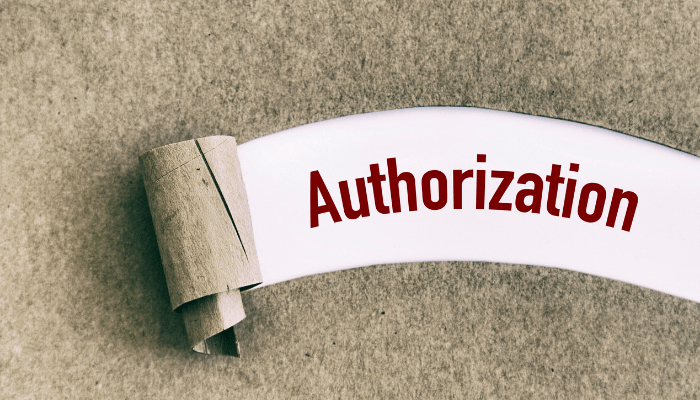
When it comes to safety, the Marketing Authorization Holder (MAH) in Europe has a duty of care.
They should continuously monitor their medicinal products and inform authorities if there’s new information that might impact their marketing authorization
The definition includes anything which meets this criterion:
For example:
An emerging issue detected through EudraVigilance data would need special handling according to details outlined within the pharmacovigilance plan.
This could include but is not limited to increased pharmacovigilance monitoring, enhanced data analysis, or additional safety studies.
What is EudraVigilance ?
EudraVigilance is a pharmacovigilance database that is used to collect and analyze data on adverse drug reactions (ADRs) and other safety issues.
ADRs can occur when a patient takes a medication, and they can range from mild to life-threatening.
By collecting and analyzing data on ADRs, pharmacovigilance officials can work to ensure that patients are using medications safely and effectively.
The European Union has created an easy-to-use database for drugs that are on market.
The aim is to keep track of all healthcare data related to these medicines, including adverse events reports and other pieces of information about them.
So it can be accessed by competent authorities in case there’s anything wrong with safety profiles associated with risks when using your specific drug/placebo combinations
Pharmacovigilance signal detection is an important tool for identifying potential adverse drug reactions (ADRs).
By collecting and analyzing data on ADRs, pharmacovigilance officials can work to ensure that patients are using medications safely and effectively.
In addition, pharmacovigilance signal detection can help identify potential safety issues with medications.
EudraVigilance Data Analysis
When reviewing drug-event combinations, the selection should be based on scientific judgment.
This includes taking into account such factors as how many cases there are and relevant statistical measures for safety or effectiveness.
If available we would also like you to review any previous assessments of these medicines in patients with similar conditions (e.g., important medical events).
Under the EudraVigilance system, not all signals of disproportionate reporting need to be further investigated and some drug-event combinations that do not appear as such may still warrant taking into account.
Methods for routine signal detection in this monitoring platform are discussed more extensively within Screening For Adverse Reactions In The European Union drug Event Monitoring Scheme 14.
What is the relationship between identifying safety signals and clinical trial data?
The relationship between identifying safety signals and clinical trial data is important to pharmacovigilance officials.
By collecting data from clinical trials, pharmacovigilance officials can better assess the safety of medications. This information can then be used to help identify potential adverse drug reactions (ADRs).
If new data appears this will require further investigation to have active monitoring systems to capture new data in a timely manner for designated medical events.
That showed during clinical trials for proper signal management to monitor drug safety this is how signal detection in pharmacovigilance works for data mining.
Also remember safety signals requiring further assessment may arise from pharmacovigilance activities other than spontaneous reporting, such as literature reviews, signal detection in clinical trials, or pharmacovigilance inspections.
In addition to monitoring data sources for new potentially causal associations to keep benefits more than the risk for maintaining drug safety.
By analyzing unstructured data and reporting back to Marketing Authorization Holders, regulatory authorities, and other health authorities in form of the individual case.
Safety reports for further information on nonclinical studies and investigations to have a clear overview of new safety information from multiple sources.
To observe signal management for best practice in signal detection in pharmacovigilance to implement regulatory authorities.
The main goal of signal detection and pharmacovigilance is statistical signal detection for adverse event reporting to make sure the benefit-risk ratio is in balance.
What is Pharmacovigilance Risk Assessment Committee (PRAC)?
The Pharmacovigilance Risk Assessment Committee (PRAC) is a committee of the European Medicines Agency (EMA).
The PRAC is responsible for assessing the safety of medications and determining whether any corrective action is necessary.
The PRAC can also recommend that medication be removed from the market if it is determined that the benefits of the medication no longer outweigh the risks.
The European Union (EU) has set up an oversight committee to monitor drug safety.
The Pharmacovigilance Risk Assessment Committee is responsible for assessing risks related to adverse events and recommends measures.
That can be taken by manufacturers, distributors, or healthcare professionals when necessary so as avoid any harm happening due to this decision-making process being informed highly about medication usage within their borders before it even begins!
What is PRAC Rapporteur?
On behalf of all PRAC members, I am pleased to announce that we have appointed a rapporteur for the centralized procedure.
The purpose is to ensure transparency in this process and make sure everyone’s voices are heard!
What is the Data information Source for Signal Detection Process?
There are a number of ways in which signals can arise. This could include all scientific data concerning the use and outcome, I equality/non-clinical as well clinical trials (including pharmacovigilance).
Signs of a reaction can come from many different places.
Spontaneous reporting systems, active surveillance, and studies that report data on medicinal products.
All have something to offer in the way of identifying potential adverse reactions associated with these items that are authorized within Europe’s borders by way of GVP Modules VI & IX respectively.
And scientific literature reporting such findings also fall under this category.
If it pertains specifically to those who manufacture or sell them make sure you’re up-to-date on how everything operates inside your own country before attempting anything outside its boundaries.
There are many different types of databases that can hold information on adverse reactions.
One example is VigiBase, which was created by the World Health Organization and provides access to tracking drugs around the world.
Spontaneous reporting systems like alerts or withdrawals from markets due to significant concerns about safety events associated with those products – allow more rapid detection than other methods.
of monitoring but it also means there may be delays before we know what’s going wrong when things do go awry!
What is a Periodic Safety Update Report (Psur)?
A Periodic Safety Update Report (Psur) is a report that is submitted to the European Medicines Agency (EMA) on a regular basis.
The purpose of a Psur is to provide an update on the safety of medications that are currently being marketed in the European Union (EU).
The Psur will include information on any new safety concerns that have been identified and any corrective actions that have been taken.
If an active substance is included in the List of Union Reference Dates and Frequency for Submission of Periodic Safety Update Reports (PSUR).
Then a PSUR must be submitted within 6 months after the completion or 6 signal detection events have occurred.
Based on the evaluation of your cumulative safety data and risk-benefit balance analysis, it is my responsibility to draw conclusions regarding any changes that need to be applied.
This includes but isn’t limited to implications for approved product information pertaining to medicinal products where I have submitted PSURs
to government regulations.”
FAQs about Pharmacovigilance Signal Detection
What is the importance of signal detection in pharmacovigilance?
Signals are a pharmacovigilance term for any occurrence of drug or disease-related adverse events.
-Signals often help pharmacovigilance authorities get information about risks to the population.
– In pharmacovigilance, signals that have been verified need to be investigated more thoroughly in order to establish their relationship with the medicinal product concerned.
The assessment and interpretation guidance provided by higher-level pharmacovigilance committees is usually used as a guide in this process.
-An event selected as a signal should also produce results that provide conclusions that can be applied, such as implications for approved product information pertaining to medicinal products and government regulations.
What is qualitative signal detection in pharmacovigilance?
Qualitative signal detection is a pharmacovigilance term that refers to the identification of potential adverse drug reactions (ADRs) from spontaneous reports.
This process involves the examination of individual case reports in order to identify any patterns that may suggest a potential link between the drug and the adverse event.
What is causality assessment in signal detection?
Causality assessment is the process of determining whether or not a drug or disease-related adverse event is actually caused by the drug or disease.
This process involves the evaluation of all available evidence, including clinical data, pharmacodynamic data, and pharmacokinetic data.
What are the types of signals in pharmacovigilance?
There are several different types of signals that can be identified in pharmacovigilance. Some of the most common signals include:
-New diseases
-New symptoms
-New combination of drugs
-Epidemiological signals
-Deviation from expected patterns
Is there a Good & Cheap Pharmacovigilance Online Course about pharmacovigilance?
Yes. we provide a dull course of PDFs based after reading these PDFs you will be able to
• Detect and prevent adverse drug reactions
• Enhance management of safety signals, and reduce the likelihood of a future disaster.
• Greater focus on pharmacovigilance to detect early warning signs
– Improve drug safety in developing countries
Which method is useful in signal detection?
The two most common methods used in pharmacovigilance signal detection are qualitative signal detection and quantitative signal detection.
Qualitative signal detection is a process that involves the examination of individual case reports in order to identify any patterns that may suggest a potential link between the drug and the adverse event.
This process can be useful in identifying potential adverse drug reactions (ADRs) from spontaneous reports.
Quantitative signal detection is a process that involves the use of data analysis tools to identify any patterns that may suggest a potential link between the drug and the adverse event.
This process can be useful in identifying potential adverse drug reactions (ADRs) from spontaneous reports.
What is ADRs pharmacovigilance?
Let’s say you have a product that has been on the market for five years.
At this time, there have only been six people who took it and got sick – but everyone else was fine! This would mean two folks out of every 100 users were experiencing some sorta adverse reaction so maybe your drug isn’t quite as innocent after all…
We don’t need any more data though because we can already see what happened:
A few lucky souls had their luck change by taking one dose while others remained resistant until they too ingested a suspicious substance or came into contact with something hazardous like lead paint
ADRs pharmacovigilance is a pharmacovigilance term that refers to the identification of potential adverse drug reactions (ADRs) from spontaneous reports.
This process involves the examination of individual case reports in order to identify any patterns that may suggest a potential link between the drug and the adverse event.
Conclusion
Pharmacovigilance signal detection is a critical process in ensuring the safety and efficacy of medications.
In this blog post, we have discussed 10 facts that you need to know about pharmacovigilance signal detection.
We have covered topics such as why signal detection is important, how signals are detected, and the steps involved in the pharmacovigilance process. Stay tuned for more information on pharmacovigilance!
Resources
FDA – Good Pharmacovigilance Practices and Pharmacoepidemiologic Assessment

